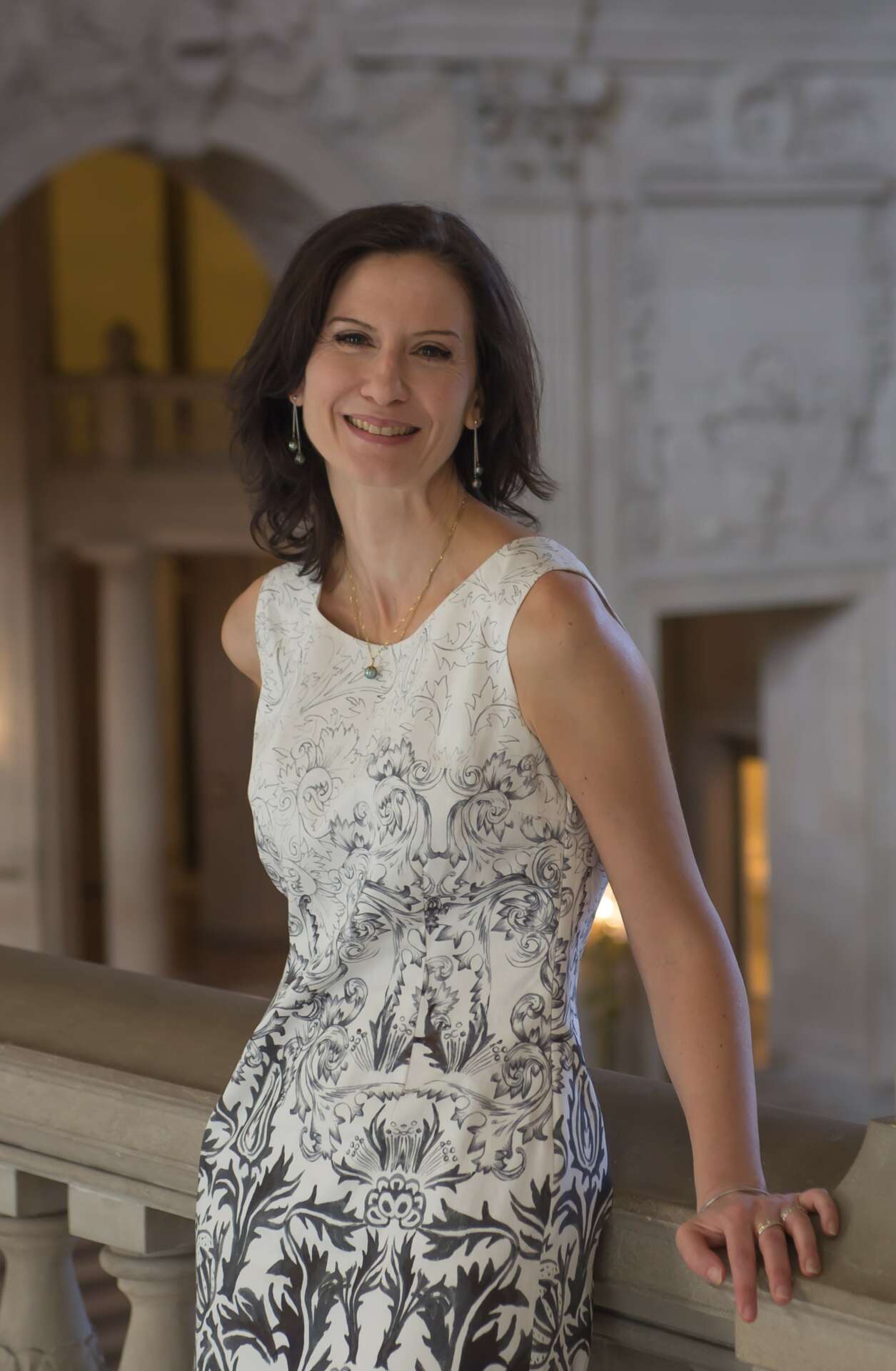We recently connected with Réjane Pratelli and have shared our conversation below.
Hi Réjane, thanks for joining us today. When did you first know you wanted to pursue a creative/artistic path professionally?
I became an artist by accident, both figuratively and literally. I was bookish and annoyingly curious as a child, and the constant search for answers led me to science and a career as an academic researcher. Lab life took me all over the world and I enjoyed the discovery of new cultures as much as my scientific explorations. However, every small success came with higher expectations, additional pressure and increasingly less personal life. My body crashed down: brain aneurysm, loss of the ability to speak and move my fingers for endless months. Learning new skills is recommended to help healing the brain, so I seized the opportunity to explore a field I had always been interested in from afar: metalsmithing. Heavy smithing was well beyond my physical abilities by then but I found a silversmithing instructor who wasn’t too worried about my impaired fingers. I learned the basics in a couple of jewelry-making workshops and practiced at home. My fingers slowly rediscovered their job, I worked more precisely and faster, and my love for sterling silver jewelry grew by the day. In addition to healing my body, I realized that silversmithing offered a way for me to process the trauma of the aneurysm and of subsequent radical changes in my personal and professional life. The healing power of art is truly understated. The icing on the cake was being randomly asked where I had found a piece of jewelry I would be wearing, and being encouraged to sell by friends. I realized I was on the path to a new job and decided to fully embrace the journey and make it happen.
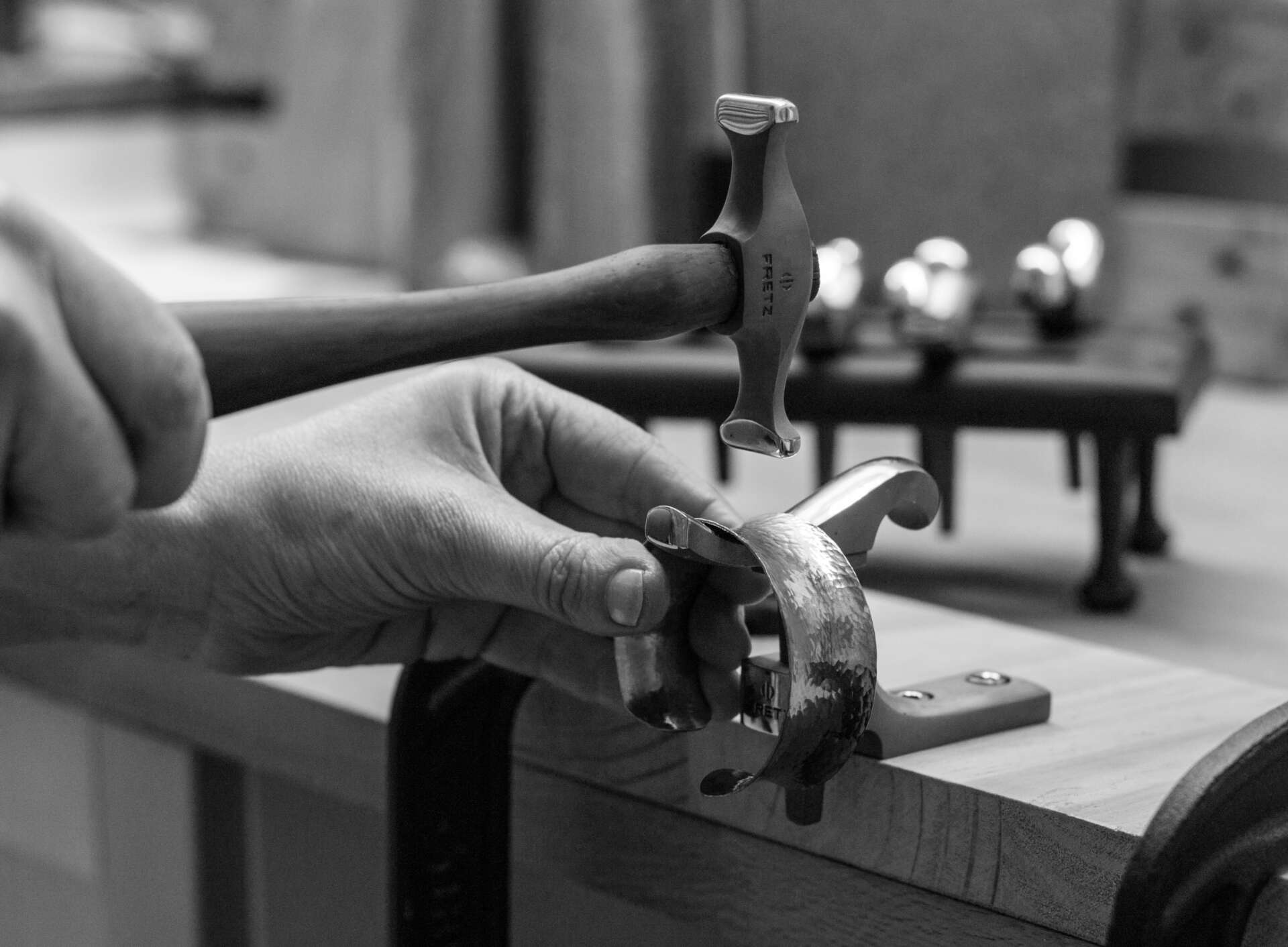
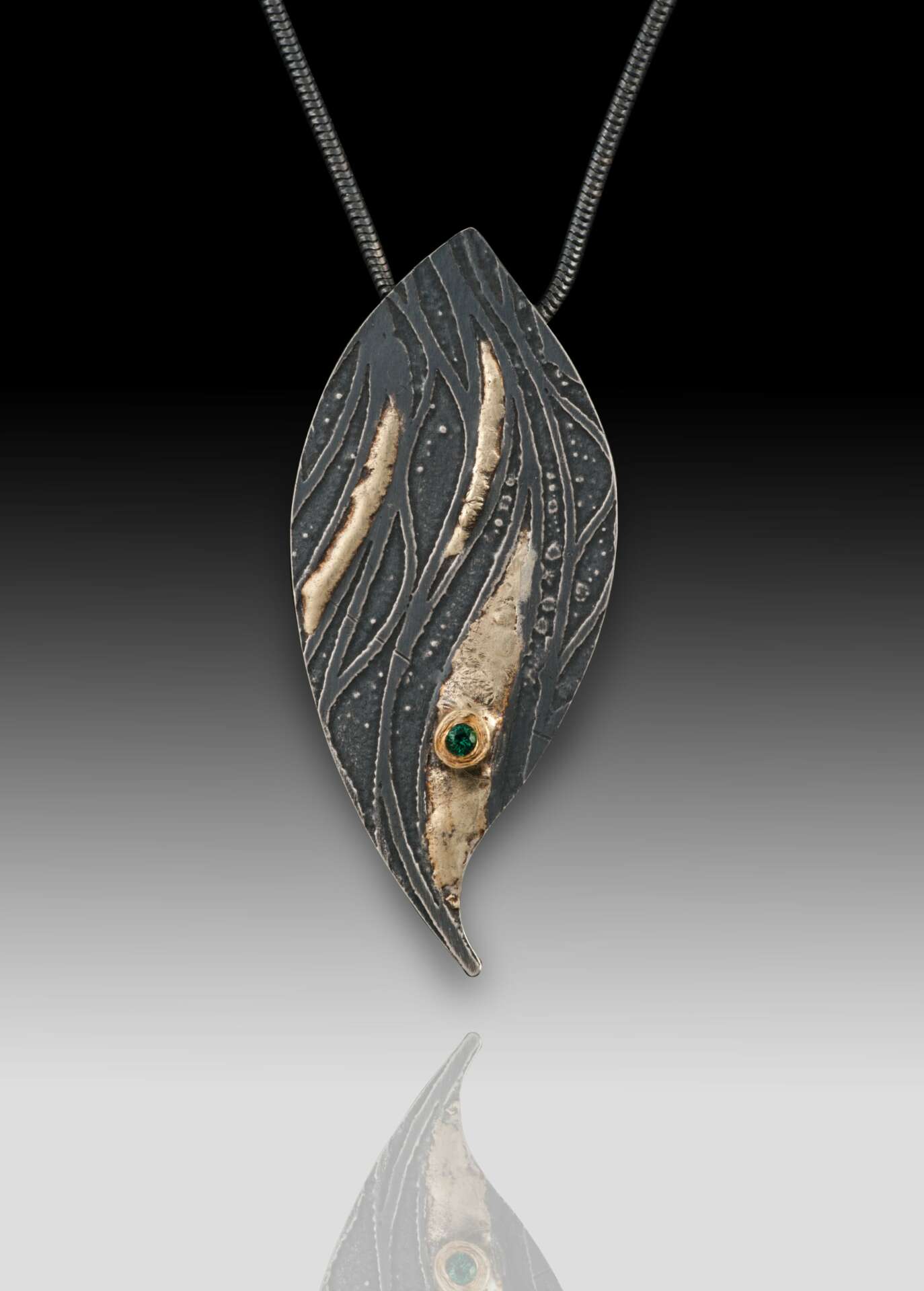

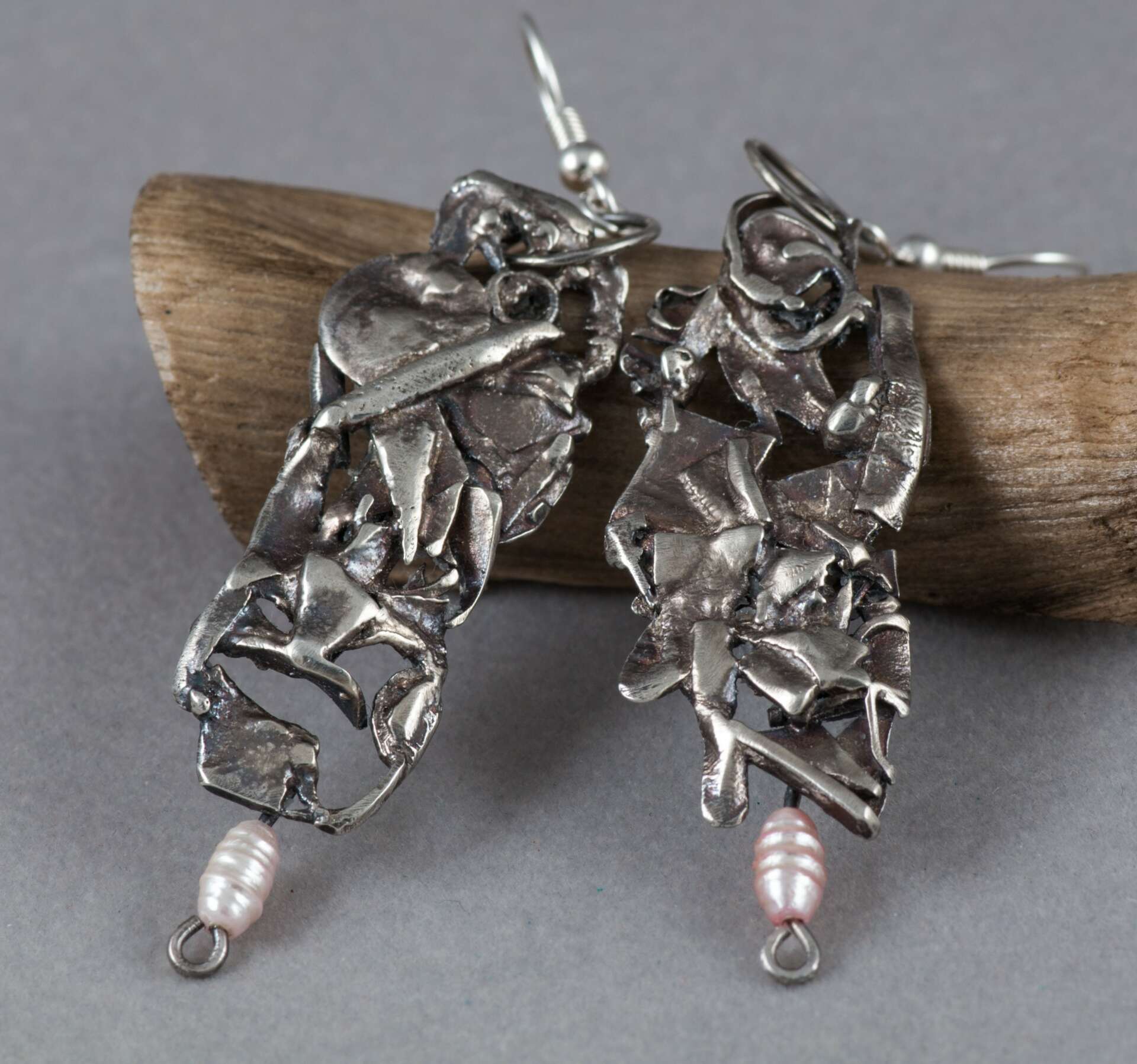
Awesome – so before we get into the rest of our questions, can you briefly introduce yourself to our readers.
My first steps into silversmithing were slow, painful and, needless to say, not very successful! But I’m really stubborn, and practiced every day until my fingers responded to my orders and wishes. A thing I’ve learned in my science life is that technical mastery is the key to efficient problem solving and creative freedom. I’ve taken as many metalsmithing workshops as I could and honed my new skills in my home studio until they became a second nature. I also got to know more intimately the precious metals I work with. My metal of choice is sterling silver. It is a most unforgiving metal, but if handled correctly, it’s the one that offers the most possibilities in terms of texture and plasticity. When I made the decision of becoming a jewelry artist, I knew texture and space would be at the center of my practice. I developed my own approaches to work the metal and give it an unconventional look. You’re never going to find highly polished, smooth and shiny pieces in my collections. Everything is purposefully a bit rumpled, wrinkled, tortuous. But there always touches of light and color. My pieces are simply a summary of life and of the complexity of the human psyche. They defy the standards of what’s acceptable as an ornament. But, unusual as they are, they do appeal to my customers. There’s nothing more heart-warming than hearing someone saying “this piece reminds me of the day when…” or “That piece is a picture of how I feel”. It can be uncomfortable, intimidating or downright soul-baring at first to wear those pieces, but ultimately it’s also truly empowering for an owner to wear a piece of jewelry that has such a deep, intimate meaning. My jewelry pieces are one of kind, or limited editions. I believe we’re all unique and deserve our one-of-a-kind ornaments. This goes even further when I work on custom orders. I spend a lot of time with my clients, get to know them and I try to bring their personality in the design. The end-product is often surprising for them – and for myself! -, but I’m proud that so far all my clients have been happy with the pieces I created for them.
The name of my business (Anvil Fire and Time) is surprising for most people. A larger number of people don’t even know what an anvil is, while the others can’t really imagine such a small woman using an anvil. I’m a very shy and private person, and I didn’t want my business name to be about me. Rather, I wanted to honor my craft and its tools. The anvil and hammers, and the fire from my torch are my favorite tools, or, better said, collaborators and friends. And all the time that is spent one each piece, one by one, is a gift of love and respect for the future owner. It’s a fairly old-fashioned concept, but isn’t it what handmade is all about?
What can society do to ensure an environment that’s helpful to artists and creatives?
In the past 60 years the world has been living faster, further and cheaper. We’ve been told over and over again that we can have all what we desire for less, whether it’s food, travel, clothes, culture… Mass production has become the go-to. However, you get what you paid for ultimately. Cheaper means corners were cut. Quality isn’t there anymore. There are consequences to cheaper, for your health, your safety, even your wallet. In addition, in spite of there being 8 billion people on the planet, we’re still unique individuals. What fun is there in wearing the same mass-produced clothes and lounging on the same mass-produced cushions as all the neighbors in your street? When you buy artisan-made, you buy something that is unique, that was crafted one at a time, carefully and skillfully. Artists spend the time to learn and the time to make. They don’t cut corners. They work with you to deliver a product that is truly what you want, that reflects your personality. Of course it’s more expensive. But quality, skill and uniqueness have a price. In return, you support a person or a small business working not far from where you live, rather than a big corporation halfway across the world. Therefore, buying from an artist is taking a stand for a human, sustainable and high-quality economy.
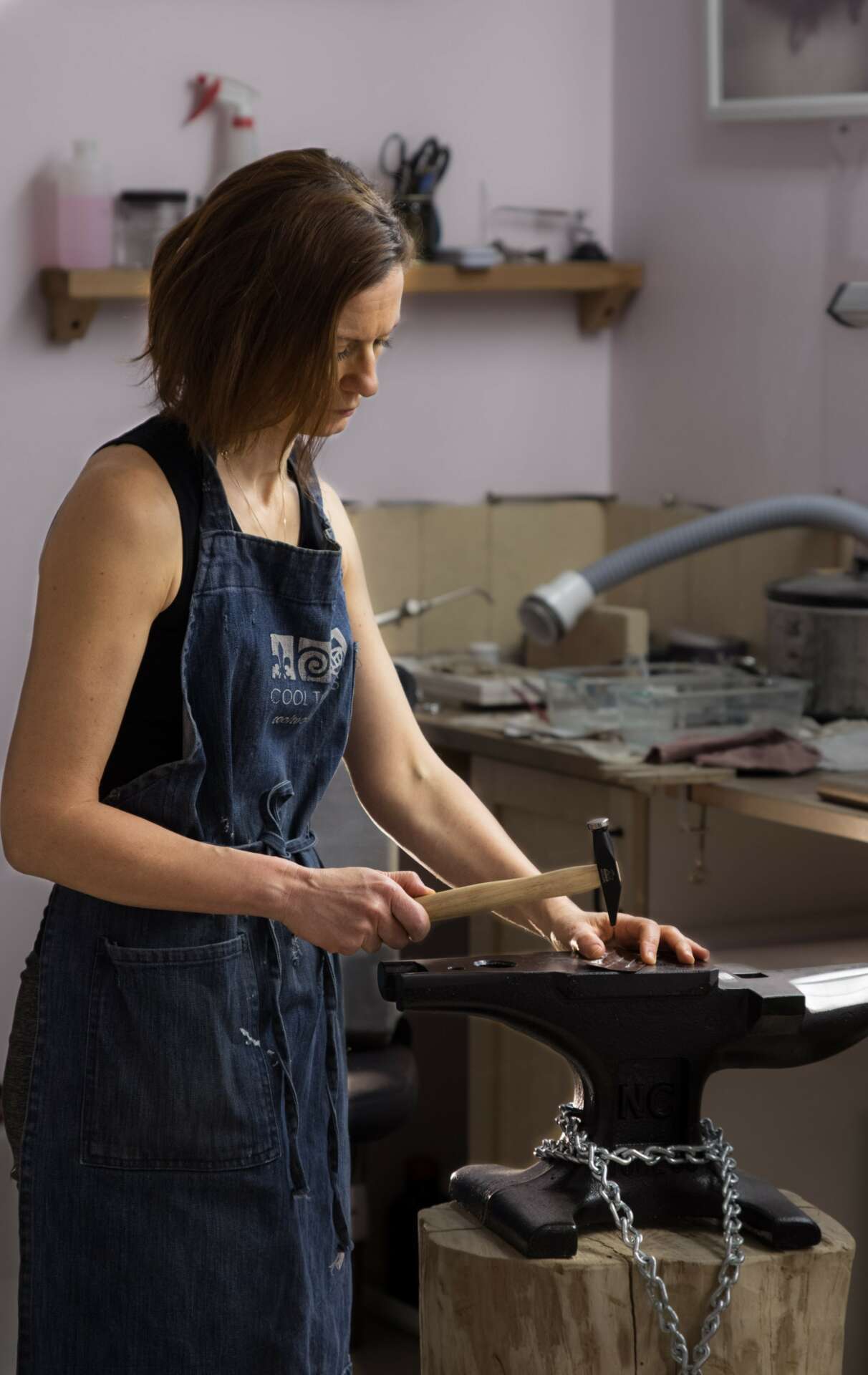


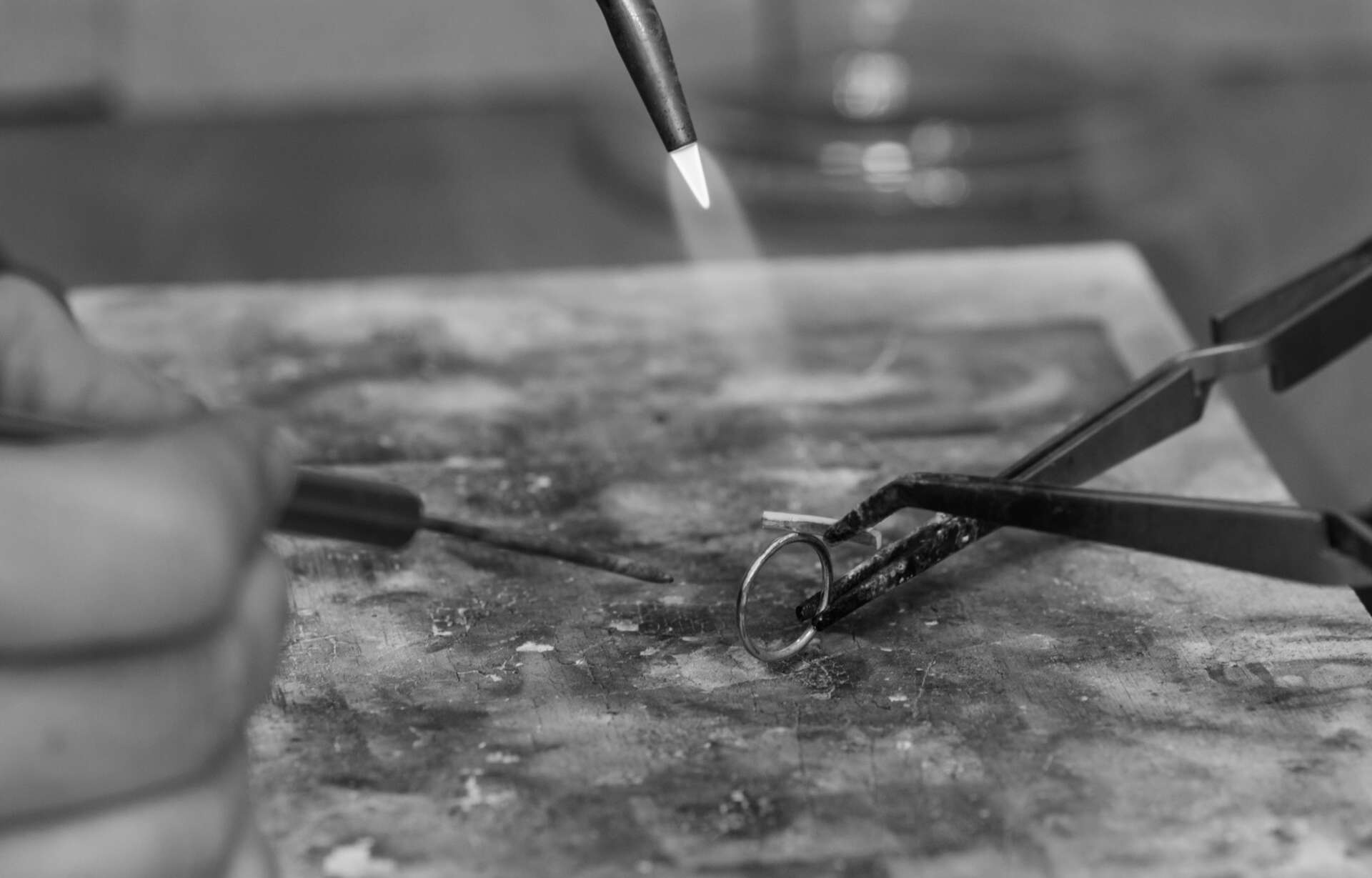
What do you think is the goal or mission that drives your creative journey?
Before embarking on my creative journey, I wasn’t a big fan of jewelry. I had a couple of really nice pieces that were gifted to me, but I wouldn’t wear them, without really knowing the reason. As I started creating my own pieces, I realized they didn’t look what you see on glossy magazine photos and in jewelry shops. You intuitively make what appeals to you, and “normal” jewelry didn’t appeal to me at all. Then there was all these comments about how my pieces were so different from what people were used to. It dawned on me: jewelry, like much of everything we buy and use, is standardized and mass-produced. I think people get tired of having the same things as everybody else. They want things that speak to them and represent them. Jewelry is particular in this context because it completes your look, it brings an idea of self-possession, confidence and perfection. It’s shiny, smooth, polished, flawless. But how can it represent a real person, with all their flaws, contradictions, worries, little joys and big bursts of laughter? I want to question jewelry in relation to the pressure society places on all of us, but especially on women: we are supposed to present a flawless appearance not matter how broken we might feel inside. How about it represents instead the truth of who we really are? Shouldn’t we wear jewelry that is personal, reflects our true self and empowers it? Jewelry that says ‘I worried all night, my child is sick, my job is in jeopardy, I hurt, but I’m still showing up, giving it my best and in spite of it all I’ll stay true to myself”. More than smoke and mirrors, your jewelry should be your talisman, your armor and your banner. I think it’s time we changed the narrative about jewelry.
Contact Info:
- Website: www.anvilfireandtime.com
- Instagram: https://www.instagram.com/anvilfireandtime/
- Facebook: https://www.facebook.com/anvilfireandtime/
- Youtube: https://www.youtube.com/@anvilfireandtime868
Image Credits
R. Pratelli.


